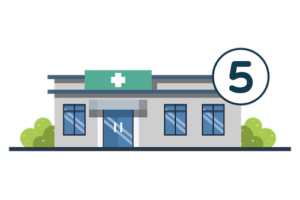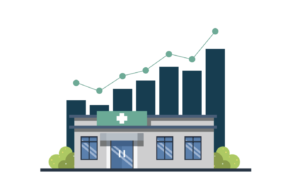Tampa General Hospital Speaks on The Patient-Consumer Impact on Hospitals & Health Systems
Looking at the patient experience from the patient-consumer perspective is vital to determining effective workflows and how to best connect with patients. Seeing it from an operational standpoint, making the most of tech and innovation solutions can help support strong HCAHPS scores and drive patient satisfaction with great leadership.
Clearwave CEO Mike Lamb recently interviewed Jason Swoboda, the Associate Director of Emerging Tech and Health Innovation at Tampa General Hospital. Known for their patient-centric, tech forward approach to healthcare, TGH is an award-winning 1,000+ bed teaching hospital that we’re proud to partner with.
- Discover more about Clearwave’s work with hospitals and health systems.
- View all videos in this interview series.
Video transcript:
Mike Lamb: Well, Jason, how does the patient-consumer concept impact operations at Tampa General and health systems like yours?
Jason Swoboda: So we all know healthcare is a competitive market. Traditional competition comes from other healthcare systems. However, there are a number of non-traditional companies that are coming into that competitive landscape. So now, more than ever, really, is time to create an experience that fosters customer loyalty — the top box mentality for our customers to remain loyal to Tampa General.
This top box mentality not only creates loyal customers, but leads to better HCAHPS scores. Of course the benefits of greater HCAHPS scores lead to better reimbursement, but it also leads to those patients who are shopping for care, reading the reviews and quality outcomes. So it really does – the consumer experience really does majorly impact operations. When you start thinking about that word, “operations,” the thought is how can you do as much as you can with the resources that you have given to you as well?
Tampa General is a very large healthcare – it’s a very large hospital. We’re about a 1,010 bed facility, but we are operating at a pretty – our beds are full a lot of the time. So throughput is a major concern for us. So we want to be able to provide the high quality of care, but we also want to, if you will, get the patients better as quick as we can and send them home so that we can also care for other patients that are coming in through the door. So we did, we made a large investment in a CareComm center. The whole purpose of that CareComm center is to help coordinate care better so that the patient gets the care that they need at the time that they need it, which helps improve the speed of delivery of, of course, the care, but it helps improve the throughput, which helps out with the operational piece. So you go back to what that customer, that patient experience is with CareComm. The thought is they’re getting the care at the right time. Which, of course, improves the quality outcomes, improves the patient satisfaction, but of course, operationally, uh, it improves in decreasing the total cost of care.




